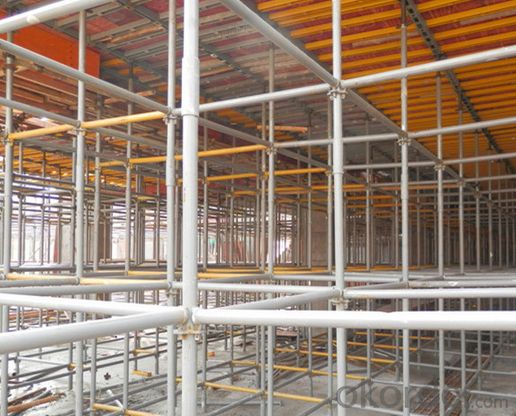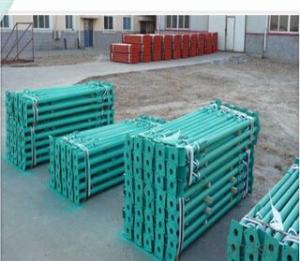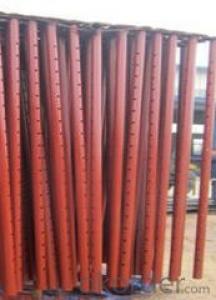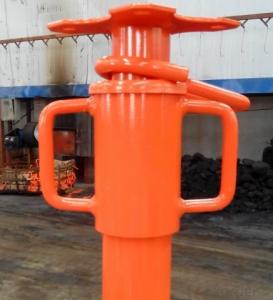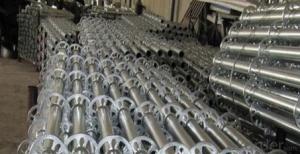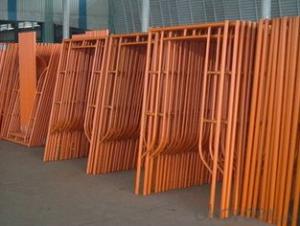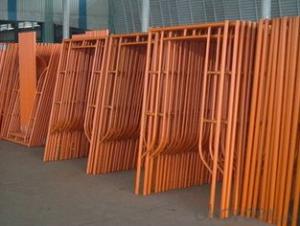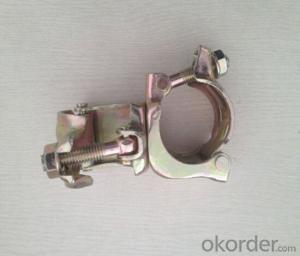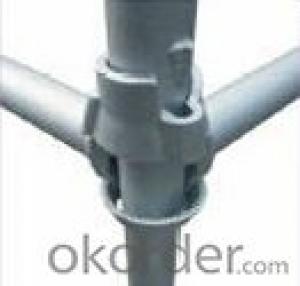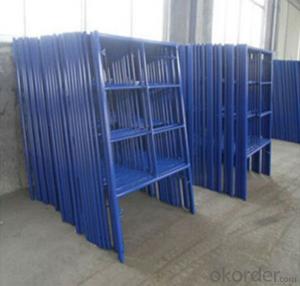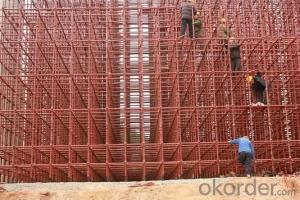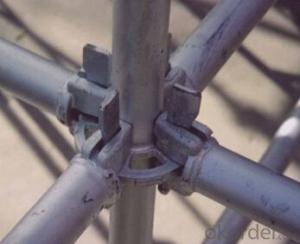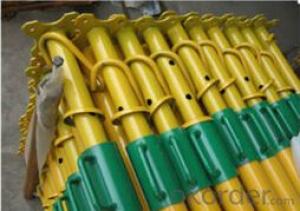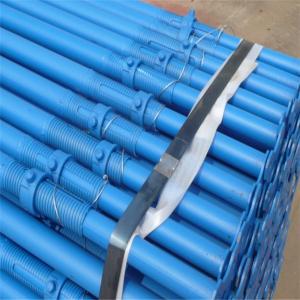Scaffolding for slab, quick locking plate scaffolding, steel scaffolding for construction
- Loading Port:
- China Main Port
- Payment Terms:
- TT OR LC
- Min Order Qty:
- -
- Supply Capability:
- -
OKorder Service Pledge
OKorder Financial Service
You Might Also Like
Quick Details
| Material: | Certificate: | Surface treatment: | |||
| Color: |
Packaging & Delivery
| Packaging Detail: | according to customers' request |
| Delivery Detail: | 10-20 days |
Specifications
1.Raw material:Q235 cold rolled steel
2.Easy to install and dismantle
3.High efficiency
4.Timely delivery
1. Quick Info
a. Model: Slab Formwork (pure steel, electrophoretic coated)
b. Application: used together with plywood for concrete form.
d. Load Capacity: 3 to 4 tons per s.q.m.(whole system)
e. Installation: A group of 4 workers can erect 300s.q.m in 8 hours.
Feature
* For heavy loads upto 2m thickness slab
* For high shoring like fly over roads and working platform around tower
* Maximizing the usage of materials for different projects easily due to various sizes of cross bracing
* Can be moved by trolley or crane, even with whole large unit - once assembled, whole phase application without repeated dismantiling and assembly.
* Key role in slab flex and slab table formwork
- Q: Are steel props suitable for supporting floor slabs?
- Floor slabs can be effectively supported by steel props. These props, also known as adjustable steel props or acrow props, are commonly utilized in construction for temporary support of horizontal structures like floor slabs. They possess the ability to adjust their height, making them adaptable to various slab thicknesses and load requirements. The composition of steel props consists of a steel tube with an inner screw mechanism, enabling easy and precise adjustment of height. They are specifically designed to withstand heavy loads, ensuring stability and support throughout construction activities. The outer tube is constructed with strong steel material, while the inner screw mechanism is typically made of hardened steel, guaranteeing durability and reliability. One significant advantage of using steel props for floor slab support is their impressive load-bearing capacity. These props have the capability to bear substantial loads, making them suitable for a wide range of construction projects. Furthermore, their adjustable height feature provides flexibility in supporting slabs with varying thicknesses. In addition, steel props are user-friendly when it comes to installation and dismantling, saving time and effort during construction. They can be swiftly adjusted to the desired height and securely positioned. Furthermore, they are reusable, making them a cost-effective solution for supporting floor slabs in multiple projects. In conclusion, steel props possess the necessary qualities to support floor slabs effectively. Their load-bearing capacity, adjustable height feature, durability, and ease of installation make them a reliable and versatile option for temporary support during construction activities.
- Q: What is the maximum height that a steel prop can reach?
- The maximum height that a steel prop can reach depends on several factors such as the size and strength of the prop, the load it is supporting, and the stability of the surrounding structure. Generally, steel props can reach heights of 3 to 5 meters, but specialized props with additional support or bracing systems can achieve even greater heights.
- Q: How do you ensure the stability of a steel prop?
- To maintain the stability of a steel prop, various factors must be taken into account and dealt with. The first and most important factor is to ensure that the prop adheres to industry standards and guidelines in terms of design and manufacturing. This involves using top-quality materials, following proper fabrication techniques, and carrying out thorough quality control checks. Aside from the design and manufacturing aspects, proper installation plays a crucial role in guaranteeing the stability of a steel prop. It is essential to place the prop on a solid and level surface to avoid any tilting or shifting. Additionally, it is vital to securely attach the prop to the structure it is supporting using appropriate fasteners or connectors. Regular inspections and maintenance are indispensable for the long-term stability of a steel prop. Periodic checks should be conducted to detect any signs of damage, wear, or deterioration. Any issues that arise should be promptly dealt with, either through repairs or replacements, to prevent further instability or potential failure. Furthermore, ensuring proper load distribution is of utmost importance for the stability of a steel prop. The load should be evenly spread across the prop, and its capacity should not be exceeded. Overloading a prop can result in excessive stress and strain, compromising its stability and potentially leading to collapse. Lastly, it is crucial to consider environmental conditions and potential external forces that may impact the stability of a steel prop. Factors such as wind, seismic activity, or nearby construction activities should be taken into account. Adequate precautions, such as bracing or additional support, may be necessary to ensure the prop remains stable under these conditions. Overall, maintaining the stability of a steel prop requires a combination of proper design, installation, maintenance, load management, and consideration of external factors. By adhering to industry standards, conducting regular inspections, and promptly addressing any issues, the stability of a steel prop can be effectively upheld.
- Q: What are the safety precautions to consider when working with steel props?
- To guarantee a safe working environment while working with steel props, it is essential to consider several safety precautions. 1. Adequate training and instruction: Ensure that workers receive proper training and instruction on the correct usage of steel props. This entails understanding the guidelines provided by the manufacturer, load capacities, and installation procedures. 2. Pre-use inspection: Before utilizing steel props, carefully examine them for any indications of damage or wear. This includes checking for cracks, bends, or corrosion. If any defects are detected, refrain from using the props and replace or repair them. 3. Utilize appropriate personal protective equipment (PPE): Workers must always wear the necessary PPE when dealing with steel props. This may comprise safety glasses, gloves, hard hats, and protective footwear. 4. Secure the props effectively: Properly fasten or anchor steel props to prevent shifting or collapsing during use. This may involve employing pins, bolts, or other suitable fasteners. 5. Ensure proper loading and weight distribution: When utilizing steel props to support loads, it is crucial to evenly distribute the weight within the recommended load capacity. Overloading steel props can result in failure, leading to potential accidents or injuries. 6. Minimize movement and impact: Avoid subjecting steel props to excessive movement or impact, as this can weaken their structural integrity. Exercise caution while handling and positioning the props to prevent unnecessary stress or damage. 7. Regular maintenance and inspection: Regularly inspect and maintain steel props to ensure their safety and functionality. This includes cleaning, lubricating, and checking for any signs of wear or damage. By adhering to these safety precautions, workers can minimize the risk of accidents or injuries when working with steel props. Prioritizing safety and following proper procedures is crucial in establishing a secure working environment.
- Q: Are steel props adjustable in small increments or only in larger steps?
- Steel props, alternatively referred to as steel shores or adjustable steel props, serve the purpose of offering temporary support to structures during the process of construction or renovation. The versatility and adjustability associated with these props enable them to deliver precise support in accordance with the specific requirements of the project. Regarding adjustability, steel props generally possess the capacity to be adjusted in small increments, thereby allowing for meticulous fine-tuning and precise positioning. This adjustability plays a crucial role in guaranteeing that the temporary support is accurately aligned and capable of effectively bearing the intended load. The adjustment mechanism of steel props typically involves a threaded screw or pin system, facilitating convenient extension or retraction. By rotating the screw or releasing the pin, the length of the prop can be increased or decreased in small increments. This affords construction workers the ability to make minor adjustments to the height or alignment of the props as necessary. The capability to adjust steel props in small increments proves particularly advantageous when working on projects that demand precise measurements, such as leveling floors or supporting beams. It empowers greater control and accuracy, ensuring that the temporary support is optimally positioned and capable of efficiently distributing the load. Overall, steel props boast high adjustability and can be fine-tuned in small increments to cater to specific construction needs. Whether it involves adjusting the height or alignment, these props provide the requisite flexibility to establish a secure and stable temporary support system.
- Q: Can steel props be used to support beams or columns?
- Yes, steel props can be used to support beams or columns. Steel props are adjustable and temporary supports that are commonly used in construction to provide temporary bracing and support to beams or columns during various stages of construction or renovation. They are designed to be strong and stable and can be easily adjusted to provide the required support.
- Q: Are steel props suitable for both indoor and outdoor applications?
- Yes, steel props are suitable for both indoor and outdoor applications. Steel props are durable, weather-resistant, and can withstand various environmental conditions, making them a versatile choice for supporting structures in both indoor and outdoor settings.
- Q: Steel support not fixed end line?
- Do you want to select a support type problem? A clear answer.
- Q: How are steel props removed after use?
- In construction projects, steel props are commonly employed to temporarily support structures like walls, beams, or slabs. When these props have fulfilled their purpose, it is necessary to remove them in a safe and efficient manner. The process of removing steel props entails various steps. To begin with, a thorough inspection is carried out to ensure the stability and integrity of the props. Any damaged or faulty props must be identified and replaced before removal. Throughout the process, it is important to adhere to safety precautions, such as wearing appropriate protective gear. Following that, the load supported by the steel props is gradually transferred to a suitable alternative support system. Hydraulic jacks or other lifting equipment are utilized for this purpose. The load is transferred with caution and at a slow pace to prevent sudden shifts or collapses. Once the load has been safely transferred, the steel props are gradually lowered. This is typically achieved by slightly loosening the adjustable nuts located at the top of the props. The props are then lowered in a controlled manner, ensuring that no sudden movements occur. After the props have been fully lowered, they can be detached from the supporting structure. This is typically done by removing any connecting bolts, clamps, or brackets. It is important to exercise caution during this process to avoid sudden movements or shifts. Lastly, the steel props that have been removed should be carefully stored or transported for future use or disposal. It is recommended to clean, inspect, and maintain them properly to ensure their continued durability and safety. In summary, the removal of steel props after use requires careful planning, gradual load transfer, controlled lowering, and safe detachment. It is crucial to adhere to proper procedures and safety guidelines to prevent accidents and ensure a smooth and efficient removal process.
- Q: How do you transport steel props to different construction sites?
- Steel props can be transported to different construction sites using various methods such as trucks or trailers. These props are typically loaded onto the vehicles and secured properly to ensure safe transportation. Additionally, larger construction companies may have their own fleet of vehicles specifically designed for transporting heavy construction materials like steel props.
Send your message to us
Scaffolding for slab, quick locking plate scaffolding, steel scaffolding for construction
- Loading Port:
- China Main Port
- Payment Terms:
- TT OR LC
- Min Order Qty:
- -
- Supply Capability:
- -
OKorder Service Pledge
OKorder Financial Service
Similar products
Hot products
Hot Searches
Related keywords

